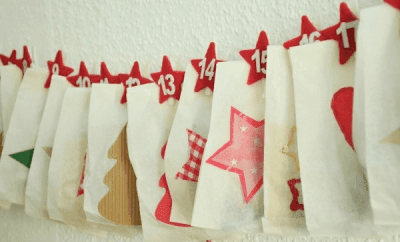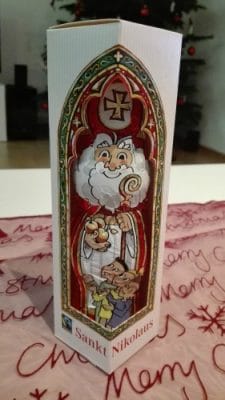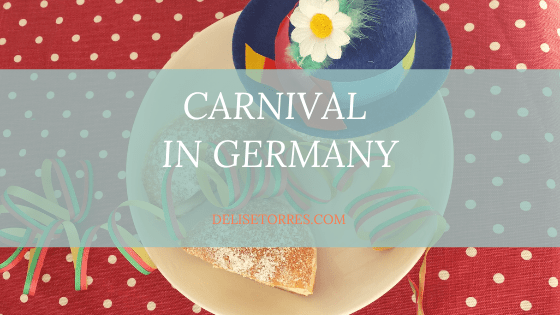This is part of my ongoing series on surviving in Germany based on my own experiences. Today we will look at Christmas in Germany, which is rich in traditions. Many Christmas customs around the world originated in Germany, like the use of decorated trees and the tradition of Christmas markets. Below are 5 things to know about Christmas in Germany.
Advent

The Christmas season begins four weeks before Christmas day, at what is known as Advent. Germans celebrate this time by lighting an Adventskranz (wreath) like the one pictured above. It consists of four candles, which are lighted at the beginning of each week, one candle per week. You can buy these already prepared or create your own.

For children, there is the Adventskalendar. Manufacturers sell these as a cardboard box with windows for each day (starting Dec 1 until the 24th). Behind each window is, for example, chocolate or a picture. Some families create their own Advent calendar (as pictured above), using small bags or Christmas boots for each day, and place chocolate and small toys inside.
St. Nicholas Day (Nikolaustag)

On December 6, Germans celebrate St. Nicholas Day on the day of his death. He was a bishop who once helped a poor man with three daughters by secretly leaving three bags of gold on their doorstep during the night, presumably down a chimney or in a stocking, hence where the tradition of Santa Claus comes from. On this day, children receive a chocolate figure of St. Nikolaus, typically in a basket with oranges, nuts, and other sweets.
Christmas Markets

Christmas markets consist of small stalls selling food, drinks, and Christmas decor. The most popular thing to do at these markets is to consume a glass of Glühwein or mulled wine (as described in my previous post on popular German drinks). Other popular beverages are Eierpunsch or egg punch (similar to eggnog, made with egg yolks, white wine, and vanilla) and Feuerzangenbowle (fire-tongs punch). This is made by pouring rum onto a piece of brown sugar and setting it on fire over mulled wine. The sugar melts and dissolves into the drink (as pictured below).

Don’t be surprised to get your drink in a glass or ceramic cup (that is the norm). When you pay, the price includes a Pfand or deposit, which you get back when you return the cup. Some Christmas markets sell their drinks in commemorative mugs for the year and city on which the market is held. You can keep these as souvenirs if you don’t want to get the Pfand back.
Cookies and Other Sweets

Christmas is time for cookies and most Germans spend the Advent baking their own, to have ready when friends and family come to visit. You can also buy cookies in the bakery if you don’t want to bake them yourself.
Other traditional sweets are Stollen (fruit bread with dried fruits and nuts) and Lebkuchen (similar to gingerbread).
Christmas Eve and Christmas Days

In Germany, there are two official national holidays, the 25th and 26th (1st and 2nd days of Christmas). Germans usually buy their trees a little before Christmas Eve, but they leave them until the end of January. They are sparsely decorated (as compared to those in the US) and the lights usually resemble candles, since that is what was used in the past.
On Christmas Eve or Heiligabend, Germans usually attend mass and then return home to exchange presents. Some German children believe it is the Weihnachtsmann (Santa Claus) who brings the presents while others think it’s the Christkind (Jesus child).
Usually, kids are tricked in some way to be in another room where they cannot see the parents placing the presents under the Christmas tree. Then, with a little bell, the short visit of the Christkind is announced. The children have no chance to see him because he moves so fast!
The 25th and 26th are for visiting family and enjoying a nice meal together. Roasted goose is common for these meals.
Anything else to add? What are your favorite Christmas traditions?










